Logistieke strategieën voor bedrijven:23 experts delen tips voor het ontwikkelen van een winnende logistieke strategie (of het verbeteren van uw bestaande)
Voor elk bedrijf dat een verscheidenheid aan producten en diensten aan klanten levert, is het van cruciaal belang voor de gezondheid van dat bedrijf om een logistieke strategie te implementeren die helpt om het serviceniveau te allen tijde op het hoogste niveau te houden, ongeacht welke veranderingen er in andere delen van de bedrijfsorganisatie kunnen plaatsvinden. Dit is een nog grotere noodzaak voor bedrijven met een complexere structuur, of die een zeer vloeiende of fluctuerende toeleveringsketen hebben, of die specifieke productlijnen, specifieke landen of specifieke klanten moeten bedienen.
Maar wat precies moeten logistieke professionals zich richten op het verbeteren van de effectiviteit van hun bedrijf? Moet u meer tijd besteden aan het identificeren van structurele verbeteringen om de productiesnelheid te verhogen? Moet u zich vooral richten op het minimaliseren van logistieke kosten? Of moet u zich eerst meer concentreren op het identificeren van de beste organisatiedoelstellingen op hoog niveau en bepalen of uw algehele logistieke strategie daaraan bijdraagt? Welke tactiek is geschikt voor uw bedrijf en in welke omstandigheden?
Om u te helpen uw keuzes te evalueren en zelfs nieuwe ideeën te bedenken, hebben we een panel van logistieke strategie-experts de volgende vraag gesteld:
"Wat is uw beste tip of idee voor een nieuw bedrijf (of zelfs een gevestigde organisatie) die hun logistieke strategie wil creëren of verbeteren om deze effectiever te maken?"
We hebben hun deskundig advies verzameld en gebundeld in deze uitgebreide gids voor een effectieve strategie voor logistiek management. We hopen dat het u zal helpen de logistieke middelen van uw bedrijf te maximaliseren en uiteindelijk uw logistieke strategie naar een hoger niveau te tillen.

Maak kennis met ons panel van experts op het gebied van logistieke strategie:
- Shawn Casemore
- Keith Biondo
- Steve Murray
- Rick D. Blasgen
- Richard Wilding
- Kenneth B. Ackerman
- Steve Novak
- Timothy D. Garcia
- Clay Gentry
- Samuel Levin
- Raad Mobrem
- Dr. McKay
- Mark Broussard
- Ben Cubitt
- Danny Yunes
- Richard J. Sherman
- Naseem Malik
- Douglas Holdsworth
- Nick Martyn
- Patrick Burnson
- Rayford Collins
- Lora Cecere
- Eric Meister
Shawn Casemeer
 Shawn Casemore is de oprichter en president van Casemore and Co, Inc. Shawn heeft bijna twee decennia leiding gegeven aan, leiding gegeven aan en motiveerde teams in een groot aantal industrieën en sectoren. Hij heeft met tientallen dynamische en diverse organisaties gewerkt, waaronder Magna International, Arvin Meritor en Bruce Power LP. Shawn wordt erkend als een thought leader op het gebied van operationele uitmuntendheid en zijn opvattingen worden vaak gepubliceerd in branchepublicaties, waaronder de Globe and Mail, CFO Magazine, Enterprise Apps vandaag, inkoop B2B en vele anderen. Shawn is de afgelopen twee jaar ook gastdocent geweest aan het Humber College Institute of Technology and Advanced Learning.
Shawn Casemore is de oprichter en president van Casemore and Co, Inc. Shawn heeft bijna twee decennia leiding gegeven aan, leiding gegeven aan en motiveerde teams in een groot aantal industrieën en sectoren. Hij heeft met tientallen dynamische en diverse organisaties gewerkt, waaronder Magna International, Arvin Meritor en Bruce Power LP. Shawn wordt erkend als een thought leader op het gebied van operationele uitmuntendheid en zijn opvattingen worden vaak gepubliceerd in branchepublicaties, waaronder de Globe and Mail, CFO Magazine, Enterprise Apps vandaag, inkoop B2B en vele anderen. Shawn is de afgelopen twee jaar ook gastdocent geweest aan het Humber College Institute of Technology and Advanced Learning.
Mijn beste logistieke strategietip is...
Maak gebruik van uw voorspelde volumes om de prijs te verlagen.
Ik heb met tal van organisaties samengewerkt om een logistiek netwerk (FTL, LTL, koerier) te ontwikkelen tijdens de lancering van een bedrijf. Het vinden van providers die de vereiste serviceniveaus tegen een concurrerende prijs aanbieden, is een uitdaging als u geen historisch volume hebt om op te vertrouwen. Dit is wanneer voorspelde volumes essentieel worden. Wat zijn uw voorspelde logistieke volumes in LTL of koerier in uw eerste jaar? Als u dit op de juiste manier positioneert, kunt u aanzienlijke kortingen op de vrachtkosten krijgen, met als resultaat een betere cashflow en concurrentievoordeel.
Ik heb een zeer kleine distributeur van keramische tegels geholpen om te onderhandelen over hun koerierstarieven. Uiteindelijk hebben we de best gerangschikte internationale koerier gebruikt met een aanzienlijke korting. Mijn klant was tevreden, maar kon het kortingspercentage nooit valideren totdat op een dag hun leverancier (een grotere nationale fabrikant van tegels) voorstelde om met hun eigen account (met dezelfde koerier) te verzenden. Ik vergeleek hun tarief met dat van het onderhandelde tarief van mijn klant om een verschil van 20% te vinden (in het voordeel van mijn klant).
In de logistieke netwerkstrategie draait het identificeren van partners om hefboomwerking, reëel of voorspeld.
Keith Biondo
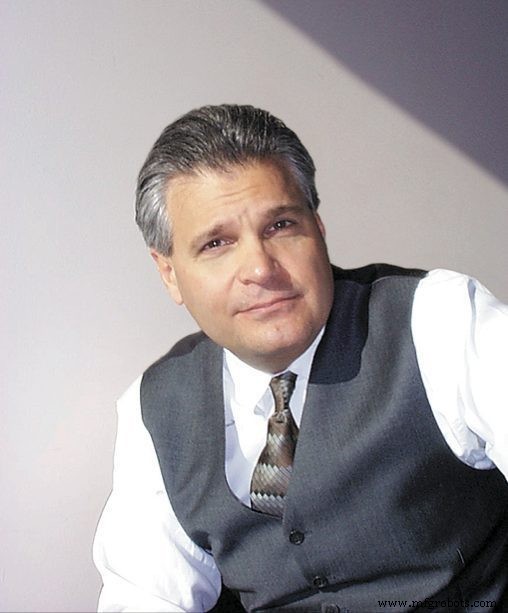 Als uitgever van Inbound Logistics Magazine – een multimediapublicatie die sinds 1981 voorziet in de informatiebehoeften van bedrijfslogistiek en supply chain managers wereldwijd – Keith Biondo wordt beschouwd als een supply chain visionair. Al vroeg in zijn carrière erkende Biondo het belang van het helpen van Amerikaanse fabrikanten om vraag en aanbod beter op elkaar af te stemmen, en zijn passie voor dat idee voedt veel van de prestaties van Inbound Logistics. Onder leiding van Biondo, Inbound Logistics hielp het logistieke segment van derden te laten groeien en leerde verladers hoe belangrijk het is om hun 3PL-providers te evalueren. Hij verdedigde ook het concept om logistieke technologie toe te passen op alle aspecten van supply chain management, van de grootste ERP-systemen tot de kleinste SaaS-oplossingen. Biondo is momenteel bestuursadviseur van de American Society of Transportation and Logistics. Biondo heeft een BA-graad in geschiedenis en Engels van St. John's University, New York.
Als uitgever van Inbound Logistics Magazine – een multimediapublicatie die sinds 1981 voorziet in de informatiebehoeften van bedrijfslogistiek en supply chain managers wereldwijd – Keith Biondo wordt beschouwd als een supply chain visionair. Al vroeg in zijn carrière erkende Biondo het belang van het helpen van Amerikaanse fabrikanten om vraag en aanbod beter op elkaar af te stemmen, en zijn passie voor dat idee voedt veel van de prestaties van Inbound Logistics. Onder leiding van Biondo, Inbound Logistics hielp het logistieke segment van derden te laten groeien en leerde verladers hoe belangrijk het is om hun 3PL-providers te evalueren. Hij verdedigde ook het concept om logistieke technologie toe te passen op alle aspecten van supply chain management, van de grootste ERP-systemen tot de kleinste SaaS-oplossingen. Biondo is momenteel bestuursadviseur van de American Society of Transportation and Logistics. Biondo heeft een BA-graad in geschiedenis en Engels van St. John's University, New York.
Als het gaat om een effectieve logistieke strategie...
Mijn enige tip is om vraaggestuurde logistiek te gaan toepassen als je dat nog niet hebt gedaan.
Het belang van een betere afstemming van de vraag naar je producten op je aanbod gaat veel verder dan het verminderen van je transportuitgaven.
Als een bedrijf begint met het beoefenen van inkomende logistiek of vraaggestuurde logistiek, worden de transportkosten verlaagd, maar de besparingen van het vervangen van voorraad door informatie en het bieden van een betere klantenservice aan uw klanten, is nog belangrijker.
Naast dat belangrijke resultaat, is het afstemmen van uw bedrijf op praktijk vraaggestuurde logistiek haalt logistiek management uit de functionele silo en biedt strategische voordelen voor de hele onderneming.
Abonneer u op Inbound Logistics Magazine voor voorbeelden, casuïstiek en best practices om u te helpen en te ondersteunen bij het starten van uw vraaggestuurd logistiek traject.
Steve Murray
 Steve Murray heeft de unieke rol van zowel Principal Consultant als Chief Researcher voor Supply Chain Visions. Als hoofd onderzoek bij Supply Chain Visions houdt Steve constant de pols van de supply chain-industrie in de gaten voor toonaangevende trends en best practices die Supply Chain Visions hun klanten kan bieden.
Steve Murray heeft de unieke rol van zowel Principal Consultant als Chief Researcher voor Supply Chain Visions. Als hoofd onderzoek bij Supply Chain Visions houdt Steve constant de pols van de supply chain-industrie in de gaten voor toonaangevende trends en best practices die Supply Chain Visions hun klanten kan bieden.
Steve onderhoudt de SC Visions "Catalog of Processes and Best Practices” – wat de basis vormt voor zowel de Supply Chain Management Process Standards-gidsen van de Council of Supply Chain Management als de Best Practice Guides van de Warehousing Education and Research Council, en hij beheert de SC Visions / CSCMP Glossary of Supply Chain Management and Logistics voorwaarden. Steve is ook lid van het team dat de jaarlijkse WERC / DC Velocity Study of DC Metrics uitvoert, en is een veelgevraagd spreker op het gebied van procesverbetering en het gebruik van metrics.
De belangrijkste tip die ik kan delen met zakelijke professionals die op zoek zijn naar een effectieve logistieke strategie...
Komt van vele jaren werkzaam als adviseur voor bedrijven op het gebied van warehousing en supply chain. Het is een vrij eenvoudige en uiterst effectieve aanpak die veel te vaak over het hoofd wordt gezien, verkeerd wordt begrepen of gewoon niet goed wordt uitgevoerd.
Nieuwe en bestaande bedrijven zouden de tijd moeten nemen om de essentie van Sales and Operations Planning te begrijpen. b> of S&OP. Vaak zie ik bedrijven die 'denken' dat ze S&OP kennen, en sommigen die een vorm van S&OP toepassen zonder het echt te noemen. Maar ik zie niet veel bedrijven het effectief toepassen.
S&OP is simpelweg gedefinieerd als een strategie waarbij alle primaire functies (verkoop, marketing, productbeheer, productie, opslag, inkoop, financiën, transport) van de bedrijven komen samen als een team (van aangezicht tot aangezicht of via een communicatielink) om bedrijfsactiviteiten te beoordelen, te bespreken en te plannen. Merk hier op dat het niet alleen Sales en Operations omvat, maar alle partijen moet omvatten die invloed hebben op, of worden beïnvloed door, de reguliere activiteiten van het bedrijf.
Deze sessie moet worden gezien als een "team"-inspanning, met alle het begrijpen van een gemeenschappelijke reeks doelen (klanttevredenheid, winstgevendheid, verbeterde verkoop, enz.), en overeenkomen om samen te werken om die doelen te bereiken. De vergadering moet zo vaak mogelijk worden gehouden en het team moet beschikken over een reeks tools, KPI's en rapporten om te helpen bij regelmatige controles en meldingen. Vergaderingen moeten gericht en kort zijn, ze moeten over samenwerking gaan en confrontaties strikt vermijden. Ja, we zullen bespreken wat er mis is gegaan, maar met een focus op het "waarom" en "hoe" van verbetering en het elimineren van het probleem. Het zou meer moeten gaan over het plannen van wat er op korte en lange termijn komt en hoe het team dit zal aanpakken.
Alle partijen moeten zich ertoe verbinden om voorbij de functionele silo's te komen die bedrijven blijven achtervolgen. Het moet na verloop van tijd een diepgeworteld onderdeel worden van de bedrijfscultuur.
Als het goed wordt uitgevoerd, kan een solide S&OP-proces meer doen dan welke andere logistieke strategie dan ook om de kans op succes te vergroten. Als het "team" eenmaal op één lijn zit, kunnen de afzonderlijke functionele gebieden zich richten op hoe hun deel van het proces het meest effectief kan worden aangepakt, waarbij ze volledig begrijpen wat de doelen zijn.
Zonder S&OP is bewezen dat de meeste functies creëren hun eigen doelen, maar zijn waarschijnlijk niet afgestemd op de rest van het bedrijf. Bijvoorbeeld; Een DC die een hoog opvulpercentage voor klantorders bereikt, is mogelijk niet goed voor het bedrijf als dit hoge kosten met zich meebrengt voor de rest van het bedrijf. S&OP kan helpen ervoor te zorgen dat alle logistiek gerelateerde activiteiten zijn afgestemd op het verkrijgen van het hoogst mogelijke opvulpercentage op de meest economische en efficiënte manier.
Rick Blasgen
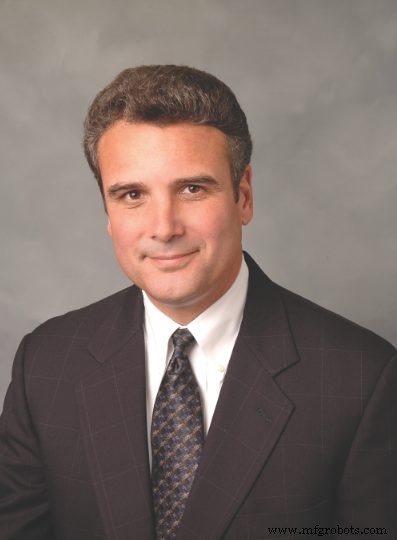 Rick D. Blasgen is momenteel de president en chief executive officer van de Council of Supply Chain Management Professionals (CSCMP ) in Lombard, Illinois, VS. Hij begon zijn carrière bij Nabisco, waar hij verschillende logistieke functies bekleedde met toenemende verantwoordelijkheid op het gebied van voorraadbeheer, orderverwerking en beheer van transport- en distributiecentra. Hij werd vice-president, supply chain, bij Nabisco in 1998, en vervolgens vice-president supply chain voor Kraft in 2002. Van 2003 tot 2005 was hij senior vice-president geïntegreerde logistiek bij ConAgra Foods. Hij behaalde zijn diploma in bedrijfskunde aan de Governors State University.
Rick D. Blasgen is momenteel de president en chief executive officer van de Council of Supply Chain Management Professionals (CSCMP ) in Lombard, Illinois, VS. Hij begon zijn carrière bij Nabisco, waar hij verschillende logistieke functies bekleedde met toenemende verantwoordelijkheid op het gebied van voorraadbeheer, orderverwerking en beheer van transport- en distributiecentra. Hij werd vice-president, supply chain, bij Nabisco in 1998, en vervolgens vice-president supply chain voor Kraft in 2002. Van 2003 tot 2005 was hij senior vice-president geïntegreerde logistiek bij ConAgra Foods. Hij behaalde zijn diploma in bedrijfskunde aan de Governors State University.
Als het gaat om logistieke planning voor elk bedrijf...
Mijn toptip is om een ervaren logistiek medewerker aan te trekken die beschikt over uitstekende interpersoonlijke vaardigheden, een goede connectie heeft met de logistiek/supply chain-wereld (uiteraard een CSCMP-lid!), een bewezen leider is en een solide financieel inzicht heeft.
Richard Wilding
 Richard Wilding is hoogleraar Supply Chain Strategy aan de Cranfield School of Management. Als voorzitter (Full Professor) in Supply Chain Strategy bij het Centre for Logistics and Supply Chain Management, Cranfield School of Management UK, werkt Richard samen met Europese en internationale bedrijven aan logistieke en supply chain-projecten in alle sectoren, waaronder farmaceutica, retail, automotive, high-end technologie, eten, drinken en professionele diensten om er maar een paar te noemen. Hij is een veelgeprezen presentator en spreekt regelmatig op industriële conferenties en heeft lezingentours door Europa en Azië ondernomen op uitnodiging van lokale universiteiten en industriële confederaties. Hij heeft veel gepubliceerd op het gebied van Supply Chain Management en is Editorial Advisor voor een aantal toptijdschriften op dit gebied.
Richard Wilding is hoogleraar Supply Chain Strategy aan de Cranfield School of Management. Als voorzitter (Full Professor) in Supply Chain Strategy bij het Centre for Logistics and Supply Chain Management, Cranfield School of Management UK, werkt Richard samen met Europese en internationale bedrijven aan logistieke en supply chain-projecten in alle sectoren, waaronder farmaceutica, retail, automotive, high-end technologie, eten, drinken en professionele diensten om er maar een paar te noemen. Hij is een veelgeprezen presentator en spreekt regelmatig op industriële conferenties en heeft lezingentours door Europa en Azië ondernomen op uitnodiging van lokale universiteiten en industriële confederaties. Hij heeft veel gepubliceerd op het gebied van Supply Chain Management en is Editorial Advisor voor een aantal toptijdschriften op dit gebied.
Als het gaat om het creëren van een effectieve strategie voor logistiek management...
Het antwoord op uw vraag staat in mijn 60 seconden over Supply Chain Strategy-video op YouTube.
Enkele opmerkingen uit de 60 seconden durende video:
Logistiek en supply chain-strategie kunnen worden samengevat als de operationele uitvoering van de bedrijfsmissie.
Dus begrijp eerst de bedrijfsmissie, reflecteer op de bedrijfsstrategie van de organisatie en plan dienovereenkomstig. Ten tweede, erken dat een "gemiddelde" toeleveringsketen betekent dat 50% van de klanten uw service beu is en 50% waar u te veel geld aan uitgeeft! Een gerichte concurrentiestrategie is vereist, dus overleg en overleg met de marketing- en verkoopfuncties van uw bedrijf. U moet uw klanten en producten dus segmenteren, zodat u individuele toeleveringsketens kunt ontwikkelen om maximale waarde te creëren tegen de laagst mogelijke kosten voor elk van deze groepen. Ten derde, om een supply chain-strategie echt te laten werken, moeten er vier gebieden worden ontworpen.
Uw supply chain-processen, de supply chain-infrastructuur, inclusief waar u faciliteiten plaatst en ook welke apparatuur wordt gebruikt, uw supply chain-informatiesystemen, en tot slot de organisatie van de toeleveringsketen. Dit is hoe u uw mensen organiseert.
Dus kort samengevat, begin met de bedrijfsstrategie, identificeer hoe u concurreert in verschillende markten en begrijp de concurrentiestrategie, ontwikkel de supply chain-strategie om deze markten te bedienen door uw supply chain-processen op maat te maken , infrastructuur, informatiesystemen en organisatie en mensen.
Kenneth B. Ackerman
 Ken Ackerman is zijn hele carrière actief geweest in logistiek en magazijnbeheer. Voordat hij het adviesveld betrad, was hij chief executive van Distribution Centers, Inc., een openbaar magazijnbedrijf dat nu deel uitmaakt van Exel Logistics USA. In 1980 verkocht Ackerman het bedrijf en trad toe tot de managementadviesafdeling van Coopers &Lybrand. In 1981 richtte hij de Ackerman Company op, een managementadviesdienst.
Ken Ackerman is zijn hele carrière actief geweest in logistiek en magazijnbeheer. Voordat hij het adviesveld betrad, was hij chief executive van Distribution Centers, Inc., een openbaar magazijnbedrijf dat nu deel uitmaakt van Exel Logistics USA. In 1980 verkocht Ackerman het bedrijf en trad toe tot de managementadviesafdeling van Coopers &Lybrand. In 1981 richtte hij de Ackerman Company op, een managementadviesdienst.
Ken is redacteur en uitgever van Warehousing Forum , een maandelijkse abonnementen nieuwsbrief en blog. Zijn nieuwste boeken zijn Lean Warehousing en Fundamenten van Supply Chain Management , beide gepubliceerd in 2007. Andere recente publicaties van hem zijn onder meer Auditing Warehouse Performance en Opslagtips . Harvard Business Review publiceerde "Making Warehousing More Efficient", co-auteur met professor Bernard J. LaLonde. The New York Times publiceerde zijn gelabelde artikel "Just In Time, Right For Retail". Hij is de auteur van tal van andere artikelen over opslag en beheer.
Hij heeft de volgende educatieve en professionele referenties:
- BA, Princeton University
- MBA, Harvard University
- Raad van Supply Chain Management Professionals – Voormalig voorzitter
- Warehousing Onderwijs- en Onderzoeksraad – Oprichter
Het belangrijkste idee over het logistieke plan van een bedrijf is…
dat het altijd ondergeschikt moet zijn aan de bedrijfsstrategie. Bijvoorbeeld:
- Als het de strategie van uw bedrijf is om altijd de leider op het gebied van lage prijzen te zijn, dan is het belangrijkste doel van de logistieke strategie om spullen tegen de laagst mogelijke kosten te verplaatsen.
- Als uw bedrijfsstrategie gebaseerd is op wendbaarheid en het sneller verplaatsen van goederen dan concurrenten, dan is de logistieke strategie gebaseerd op snelheid in plaats van op kosten.
- Als uw bedrijf de norm stelt voor kwaliteit, dan is het logistieke doel om 100% perfecte bestellingen te hebben en alles te doen wat nodig is om eventuele fouten te corrigeren.
- Als uw bedrijf groeit door fusie, is een logistieke strategie om de activiteiten van de nieuwe acquisitie te integreren in het bestaande logistieke programma.
- Als uw bedrijf wordt beoordeeld op het rendement op geïnvesteerd kapitaal, dan is de logistieke strategie om zo vrij mogelijk van activa te blijven door kortlopende huurovereenkomsten te sluiten voor magazijnvastgoed en transportapparatuur.
Steve Novak
 Steve Novak is de president van PPR Management Services, LLC, waar hij samenwerkt met organisaties om hun doelen te definiëren en te bereiken . Hij heeft meer dan 20 jaar ervaring in procesverbetering en bedrijfsvoering en is de auteur van "The Small Manufacturer's Toolkit".
Steve Novak is de president van PPR Management Services, LLC, waar hij samenwerkt met organisaties om hun doelen te definiëren en te bereiken . Hij heeft meer dan 20 jaar ervaring in procesverbetering en bedrijfsvoering en is de auteur van "The Small Manufacturer's Toolkit".
Mijn beste tip voor het creëren van een effectieve logistieke strategie is…
Bepaal eerst wat u probeert te bereiken, welke doelen u probeert te bereiken. Uw logistiek / supply chain-strategie ondersteunt de doelstellingen van het bedrijf, dus uw supply chain-strategie moet aansluiten bij en helpen bij het bereiken van de doelstellingen van de organisatie. De tweede stap is om te verwoorden hoe de supply chain-strategie werkt om de doelen op een hoger niveau te bereiken.
Als bijvoorbeeld speed-to-market een doel is, zal de supply chain-strategie er anders uitzien dan een strategie waarbij het doel is om de goedkope leverancier.
Timothy D. Garcia
 Tim Garcia is de oprichter en CEO van Apptricity, een toonaangevende leverancier van softwareoplossingen voor logistiek en supply chain management. Tim brengt meer dan 25 jaar ervaring op het gebied van softwareverkoop, -beheer en -ontwikkeling in de markt voor bedrijfsapplicaties naar Apptricity, en onder zijn leiding omvat het groeiende klantenbestand van Apptricity nu drie van 's werelds grootste organisaties, namelijk Walmart Stores, AT&T en het ministerie van Defensie . Voorafgaand aan Apptricity bekleedde Garcia managementfuncties bij Pivotal Corporation (Nasdaq:PVTL), Compuware Corporation (Nasdaq:CPWR), Peregrine Systems (NYSE:HPQ), Sterling Software (NYSE:CA) en EDS (NYSE:HPQ). Hij behaalde zijn BA in economie aan de Universiteit van Californië in Davis.
Tim Garcia is de oprichter en CEO van Apptricity, een toonaangevende leverancier van softwareoplossingen voor logistiek en supply chain management. Tim brengt meer dan 25 jaar ervaring op het gebied van softwareverkoop, -beheer en -ontwikkeling in de markt voor bedrijfsapplicaties naar Apptricity, en onder zijn leiding omvat het groeiende klantenbestand van Apptricity nu drie van 's werelds grootste organisaties, namelijk Walmart Stores, AT&T en het ministerie van Defensie . Voorafgaand aan Apptricity bekleedde Garcia managementfuncties bij Pivotal Corporation (Nasdaq:PVTL), Compuware Corporation (Nasdaq:CPWR), Peregrine Systems (NYSE:HPQ), Sterling Software (NYSE:CA) en EDS (NYSE:HPQ). Hij behaalde zijn BA in economie aan de Universiteit van Californië in Davis.
Als het gaat om de logistieke managementstrategie van een bedrijf...
In de hypersnelle, online omgeving van vandaag is er een kritieke behoefte om aan de verwachtingen van klanten te voldoen. Het vinden van een snellere, efficiëntere manier om producten te verwerken is belangrijk voor het ondersteunen van een succesvolle organisatie, en een goed geleide toeleveringsketen is van vitaal belang voor het succes van een bedrijf. Beginnen met een geweldige oplossing of het upgraden van het supply chain management-systeem is essentieel om te kunnen concurreren en kan de productiviteit aanzienlijk verhogen. Het potentieel voor verstoring van de toeleveringsketen komt van onverwacht weer, natuurrampen, politieke onrust, economische crises en andere 'zwarte zwaan' of unieke gebeurtenissen die een start-up kunnen ruïneren en een bestaand bedrijf kunnen verlammen.
De belangrijkste tip bij het verzachten de mogelijke negatieve gevolgen van verstoringen van de toeleveringsketen is het doen van effectieve en zorgvuldige pre-planning. Benjamin Franklin zei:"Een ons preventie is een pond genezing waard." Die quote is absoluut van toepassing op supply chain logistiek. Elk bedrijf heeft een speciale "vingerafdruk" met zijn producten; sommige zijn gevoelig voor bederf, sommige zijn kwetsbare elektronica en andere vereisen meer menselijke arbeid. Om snel en slagvaardig te kunnen reageren, is een plan met de juiste oplossing cruciaal voor een organisatie. Met bedrijven, leveranciers en fabrikanten in verschillende delen van de wereld, heb je technologie nodig die iedereen met elkaar verbindt op een manier die consistentie biedt, processen stroomlijnt en de zichtbaarheid verbetert om uitdagingen in realtime aan te gaan. Een bedrijf is slechts zo succesvol als zijn toeleveringsketen. Nu vooraf plannen en dit vandaag naar het uitvoerende team in een organisatie brengen, kan morgen de meeste problemen met de klantenservice elimineren.
Het vinden van de juiste oplossing kan baanbrekend zijn in de hectische, onzekere markt van vandaag. Potentiële problemen liggen in slecht beheerde magazijnprocessen, onvoldoende gevolgde vloten en hun inventaris, verspreide voorraad, gebrekkig transportbeheer of een ander raadsel in de toeleveringsketen. helpen, is veel van de nadruk gelegd op het maximaliseren van het potentieel van het personeelsbestand. Door minder handen te hebben om zendingen te ontvangen en te verplaatsen, komt nauwkeurigheid en snelheid hoger uit. Dit is nauw van toepassing op organisaties die te maken hebben met bederfelijke en tijdgevoelige producten, zoals voedsel, dranken of alles wat met de koudeketen te maken heeft. Binnen deze organisaties is het zorgvuldig volgen van zendingen essentieel.
Veel organisaties vertrouwen nog steeds op 'tribale kennis' voor dit soort informatie, maar zelfs de beste herinneringen falen. Handmatige processen neigen naar fouten, maar een systeem dat informatie centraliseert en de supply chain helpt automatiseren, biedt een niveau van ondersteuning en realtime toegang tot informatie die een bedrijf kan helpen zijn maximale potentieel te bereiken met een minimale investering in tijd, planning en implementatie van oplossingen.
Plannen voor de toekomst met innovatie is de sleutel, of het nu gaat om het in vorm brengen van uw bedrijfsvloot met software voor wagenparkbeheer, het nauwlettend in de gaten houden van het product door middel van voorraadbeheeroplossingen of het maximaliseren van elke vierkante meter ruimte met verbeterd magazijnbeheer. Innovatie komt op de markt doordat oplossingen gegevens centraliseren en realtime toegang bieden tot wat u moet weten, of u nu op kantoor, in de straat of op verschillende continenten bent.
Technologie koppelt leveranciers aan klanten en klanten aan verladers via een onderling verbonden web dat het soort snelle, aanpasbare reactie promoot waarmee een bedrijf zijn concurrenten voor is. De logistiek van vandaag is mobiel, verbonden en vereist veel meer dan de managementstijl met potlood en klembord van de afgelopen jaren. Eric Schmidt, CEO van Google, heeft gezegd dat de wereld nu in een tijdsbestek van 48 uur zoveel gegevens creëert als de hele menselijke beschaving vanaf het begin van de geschiedenis tot 2003 heeft kunnen produceren. Het plannen en benutten van die big data om een bedrijf beter te begrijpen en voort te stuwen een duurzame toekomst.
Clay Gentry
 Clay Gentry is VP van Logistics Operations, verantwoordelijk voor het ontwikkelen van innovatieve TMS-technologie en het verbeteren van processen voor klanten van Transportation Insight, een toonaangevende Noord-Amerikaanse 3PL. Hij heeft meer dan tien jaar ervaring in niet-activa-gebaseerd logistiek management. Zijn betrokkenheid bij klanten omvatte onder meer transportplanning en procesbeheer, engineering, continue verbetering en procesontwerp en integratie van het transportbeheersysteem (TMS).
Clay Gentry is VP van Logistics Operations, verantwoordelijk voor het ontwikkelen van innovatieve TMS-technologie en het verbeteren van processen voor klanten van Transportation Insight, een toonaangevende Noord-Amerikaanse 3PL. Hij heeft meer dan tien jaar ervaring in niet-activa-gebaseerd logistiek management. Zijn betrokkenheid bij klanten omvatte onder meer transportplanning en procesbeheer, engineering, continue verbetering en procesontwerp en integratie van het transportbeheersysteem (TMS).
Het beste idee dat ik kan delen met zakelijke professionals om beter te begrijpen hoe logistieke strategieën werken, is…
Logistieke strategie is de wetenschap van het evalueren van de meest kosteneffectieve methode voor het distribueren van goederen naar de markt en het behalen van serviceniveaudoelstellingen. Bij het opzetten van een effectieve logistieke strategie moet u begrijpen in welke mate logistiek uw activiteiten en die van uw klanten beïnvloedt. Hoe cruciaal is tijdige levering van uw inkomende en uitgaande leveringen en welke beperkingen er zijn, zoals budget, middelen en bestaand netwerk van leveranciers. Als u ervoor kiest om uw logistieke activiteiten uit te besteden, zorg er dan voor dat u een organisatie gebruikt die hand in hand met u samenwerkt om uw logistiek mede te beheren, zodat u al uw eerstelijnsvervoerdersrelaties en controle behoudt. Werk samen met een organisatie die u niet als een "project" ziet, maar als een "partner" die hun best practices en begrip van opkomende trends met u deelt. Deze partnerschap-achtige relatie zorgt voor succes binnen uw logistieke operaties.
Samuel Levin
 Samuel Levin is de medeoprichter en algemeen directeur van MavenWire LCC. Voordat hij MavenWire LLC mede oprichtte, bekleedde Samuel verschillende functies bij G-Log Inc. (Global Logistics Technologies, overgenomen door Oracle Corporation in 2005), waaronder technisch adviseur, senior functioneel adviseur en projectmanager. Bij het implementeren van de bekroonde GC3 Supply Chain Management-oplossing van G-Log, heeft Samuel de kans gehad om in vrijwel elke logistieke branche te werken, waaronder CPG, Automotive, 3PL/4PL, Manufacturing en International Freight Forwarding.
Samuel Levin is de medeoprichter en algemeen directeur van MavenWire LCC. Voordat hij MavenWire LLC mede oprichtte, bekleedde Samuel verschillende functies bij G-Log Inc. (Global Logistics Technologies, overgenomen door Oracle Corporation in 2005), waaronder technisch adviseur, senior functioneel adviseur en projectmanager. Bij het implementeren van de bekroonde GC3 Supply Chain Management-oplossing van G-Log, heeft Samuel de kans gehad om in vrijwel elke logistieke branche te werken, waaronder CPG, Automotive, 3PL/4PL, Manufacturing en International Freight Forwarding.
Een van mijn belangrijkste tips voor het maximaliseren van de effectiviteit van uw bedrijfslogistieke strategie is...
Focus op je competenties. Veel bedrijven denken dat ze "alles moeten doen" als het om logistiek gaat, maar in werkelijkheid zijn er veel opties beschikbaar voor organisaties die effectieve en efficiënte logistieke processen willen ontwikkelen. Afhankelijk van de complexiteit van de verzendbehoeften van uw lezer, kan het in sommige gevallen bijvoorbeeld gemakkelijker zijn om de logistiek in eigen land uit te besteden aan een 3PL of een wereldwijde expediteur. En zelfs start-ups die geen gevestigde IT-afdelingen hebben, kunnen effectieve logistieke strategieën creëren door gebruik te maken van een betaalbare SaaS-gebaseerde transportbeheeroplossing (TMS). Met deze platforms kunnen organisaties vracht plannen, uitvoeren en volgen zonder zich zorgen te hoeven maken over het beheer van softwaretoepassingen en computerhardware.
Raad Mobrem
 Raad Mobrem is de CEO en medeoprichter van Lettuce, dat hij oorspronkelijk creëerde als een interne oplossing voor zijn eerste groothandel kleinbedrijf. Door de enorme vraag van andere groothandelsbedrijven nadat ze het bedrijf van Raad het product hadden zien gebruiken, werd Lettuce begin 2012 gelanceerd met de hulp van CTO Frank Jones. Raad is de visionair achter Lettuce's product en bedrijf, dat zich richt op het creëren van consumentachtige zakelijke applicaties die het voor bedrijven eenvoudiger maken om hun bedrijf te runnen.
Raad Mobrem is de CEO en medeoprichter van Lettuce, dat hij oorspronkelijk creëerde als een interne oplossing voor zijn eerste groothandel kleinbedrijf. Door de enorme vraag van andere groothandelsbedrijven nadat ze het bedrijf van Raad het product hadden zien gebruiken, werd Lettuce begin 2012 gelanceerd met de hulp van CTO Frank Jones. Raad is de visionair achter Lettuce's product en bedrijf, dat zich richt op het creëren van consumentachtige zakelijke applicaties die het voor bedrijven eenvoudiger maken om hun bedrijf te runnen.
De beste manier om de effectiviteit van uw logistieke plan te vergroten is door...
Gebruikmakend van de voor u beschikbare technologie. Mijn eigen bedrijf, Lettuce, heeft een manier ontwikkeld waarop eigenaren van kleine bedrijven kosten kunnen besparen door het hele verkoop-, verwerkings-, boekhoud-, voorraad-, prognose-, uitvoerings- en verzendproces te consolideren in één klik op de knop – laat dat maar een beetje bezinken. Er is een taak voor nodig geweest die zich over meerdere afdelingen uitstrekt en deze in één klik heeft vertaald.
Tools zoals deze zijn volgens mij essentieel voor het maximaliseren van uw logistieke proces. Lettuce is een voorraadbeheerprogramma dat toegankelijk is via het webportaal en de iPad-app, voorkomt de tussenpersoon en elimineert herhaalde gegevensinvoer, waardoor bedrijven geld besparen door de overheadkosten te verlagen en meer winst opleveren doordat verkopers meer verkopen kunnen realiseren omdat ze dat niet doen. tijd verspillen met back-end orderverwerking. Om nog maar te zwijgen over het feit dat het kleine bedrijven helpt een beetje groener te worden (zoals Lettuce) door pen en papier, de traditionele verkoopmethode, te vervangen door een iPad. Bedrijven kunnen deze app gebruiken om direct digitale catalogi te maken, creditcardgegevens ter plaatse te valideren (perfect voor beurzen), verzendkosten te berekenen, te synchroniseren met QuickBooks, voorraadbehoeften te voorspellen en groothandels 24/7 toegang en bestelmogelijkheden te geven, waardoor talloze uren worden bespaard uit het back-end fulfilmentproces.
Dr.McKay
 Dr. McKay is de CEO van MJMcKay Consulting Corporation. Hij was een van de eerste academici die in het begin van de jaren negentig door de Boeing Company werden gevraagd om een leerplan voor lean manufacturing te ontwikkelen voor het middenkader van het bedrijf. De training die hij creëerde is sindsdien gebruikt om Lean aan duizenden deelnemers te leren. Hij heeft ook genoten van zijn tijd bij het ontdekken van groeimogelijkheden voor gigantische bedrijven zoals Microsoft Corporation, Starbucks en Pfizer. Hij heeft gewerkt met overheidsorganisaties, NGO's, serviceorganisaties en fabrikanten. Hij heeft veel ervaring met het succesvol omgaan met de bijzonder unieke uitdagingen van het familiebedrijf.
Dr. McKay is de CEO van MJMcKay Consulting Corporation. Hij was een van de eerste academici die in het begin van de jaren negentig door de Boeing Company werden gevraagd om een leerplan voor lean manufacturing te ontwikkelen voor het middenkader van het bedrijf. De training die hij creëerde is sindsdien gebruikt om Lean aan duizenden deelnemers te leren. Hij heeft ook genoten van zijn tijd bij het ontdekken van groeimogelijkheden voor gigantische bedrijven zoals Microsoft Corporation, Starbucks en Pfizer. Hij heeft gewerkt met overheidsorganisaties, NGO's, serviceorganisaties en fabrikanten. Hij heeft veel ervaring met het succesvol omgaan met de bijzonder unieke uitdagingen van het familiebedrijf.
Als het gaat om het creëren van een effectieve, maar realistische, logistieke strategie...
Plan om de beslissing weg te geven.
Ik bedoel niet dat je een 3PL moet gebruiken of je logistiek op welke manier dan ook moet uitbesteden, maar als je een leidinggevende bent van je bedrijf, hoe klein ook, maak dan plannen nu om opzettelijk weg te blijven van de logistieke besluitvorming. Slimme leidinggevenden huren slimme managers in om inefficiënties in de logistiek en informatiestroom op te lossen en vervolgens uit de weg te blijven. Domme logistiek is soms het resultaat van slechte spreadsheets en slechte logica, maar dat is slechts een symptoom van de ziekte. De echte oorzaak van domme logistiek is interne bedrijfspolitiek. De "mensen met invloed" willen dit of dat, en de logistiek wordt gehamerd. Besteed uw tijd om ervoor te zorgen dat uw logistiek managers, of ze nu intern of uitbesteed zijn, zowel (1) volledig aan boord zijn met de manier waarop logistiek uw strategie ondersteunt, als (2) volledig bevoegd zijn om beslissingen te nemen zonder toestemming te vragen. Je hebt grotere vissen om te bakken.
Mark Broussard
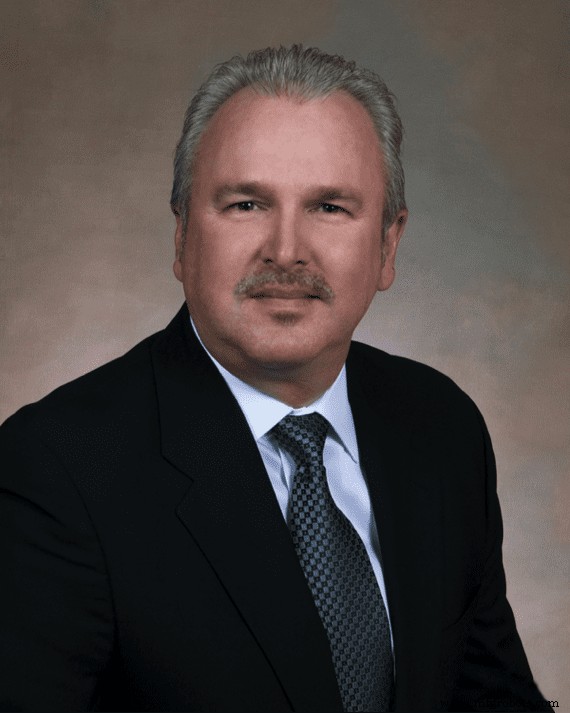 Mark Broussard is de President &Chief Operating Officer van SAMI, verantwoordelijk voor wereldwijde adviesactiviteiten, kennisactiviteiten, administratie en marketing. Mark begon meer dan tien jaar geleden met managementadvies en heeft aanzienlijke waarde gecreëerd voor klanten in de upstream-sectoren olie en gas, mijnbouw, metalen, energieopwekking, farmaceutische producten en de entertainmentindustrie. Mark is lid van de American Management Association, Society of Maintenance &Reliability Professionals en is een Certified Maintenance &Reliability Professional.
Mark Broussard is de President &Chief Operating Officer van SAMI, verantwoordelijk voor wereldwijde adviesactiviteiten, kennisactiviteiten, administratie en marketing. Mark begon meer dan tien jaar geleden met managementadvies en heeft aanzienlijke waarde gecreëerd voor klanten in de upstream-sectoren olie en gas, mijnbouw, metalen, energieopwekking, farmaceutische producten en de entertainmentindustrie. Mark is lid van de American Management Association, Society of Maintenance &Reliability Professionals en is een Certified Maintenance &Reliability Professional.
De beste manier om de effectiviteit van uw logistieke strategie te vergroten, is door…
Heb absolute duidelijkheid over het doel van de logistieke functie in de organisatie. Investeren in het ontwikkelen en duidelijk verwoorden van de visie op logistiek ter ondersteuning van de algehele operatie zijn fundamentele stappen bij het definiëren van optimale logistieke strategieën.
Ben Cubitt
 Ben Cubitt currently serves as the Senior Vice President, Consulting &Engineering of Transplace, and has more than 20 years of industry and consulting experience in freight optimization. At Transplace he leads the engineering, carrier management and consulting teams. He has a deep familiarity with the freight procurement field working for consulting firms and multiple Fortune 500 companies in the consumer products, paper and automotive industries. Mr. Cubitt has led and assisted with bid projects for companies such as MeadWestvaco, Kellogg’s, RockTenn, The Home Depot, Colgate-Palmolive, RockTenn and McCormick Foods.
Ben Cubitt currently serves as the Senior Vice President, Consulting &Engineering of Transplace, and has more than 20 years of industry and consulting experience in freight optimization. At Transplace he leads the engineering, carrier management and consulting teams. He has a deep familiarity with the freight procurement field working for consulting firms and multiple Fortune 500 companies in the consumer products, paper and automotive industries. Mr. Cubitt has led and assisted with bid projects for companies such as MeadWestvaco, Kellogg’s, RockTenn, The Home Depot, Colgate-Palmolive, RockTenn and McCormick Foods.
When it comes to logistics planning and strategies…
Within the supply chain, there is the constant challenge to optimize service and cost performance. There are more tools and challenges than ever before; but at the end of the day, for supply chain professionals, it’s all about delivering low cost and great service. To accomplish this, companies need to gain end-to-end visibility of their network and analyze service and cost performance. It starts with building a solid transaction and information foundation. Often this means partnering with a third party logistics provider (3PL) who has the people, processes and technology needed to execute, gain visibility, track and report cost and service performance.
Secondly, companies need to make sure they have the right people planning, executing and optimizing their transportation network. Do you have a team of transportation professionals with a mix of real world experience and solid academic and analytical skills? Are they trained in Lean or Six Sigma? Can they communicate? Communication is critical across the supply chain – to internal stakeholders, customers, suppliers, carrier partners or others in the industry – and managing those relationships.
Once you have a solid base of information, you need to analyze the data then optimize their freight. There are two levels of optimization:strategic and tactical. Strategic optimization looks at procurement processes, mode selection and overall network design. Tactical optimization is considering if you’re using right carriers, if deliveries and pickups on-time, etc. Shippers need to analyze cost of service daily to see where they’re having carrier performance or other service issues.
The next step is reporting and continuous improvement. You’ve built that solid foundation of data accuracy and visibility and have the right team in place and made changes to optimize your freight; then it’s time to report track and seek continuous improvement. By creating executive dashboards and actionable reports, quarterly business reviews, and continuous ad-hoc reporting it’s possible to examine trends over time and how you’re trending versus a prior period.
Gaining visibility and leveraging the data can help companies identify opportunities to take cost and inefficiency out of their supply chain. Logistics should to be a resource to the entire company and help the organization meet its strategic objectives and drive value for shareholders and customers.
Danny Yunes
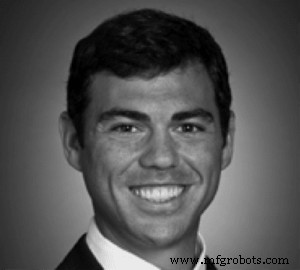 Danny Yunes is the Manager of Supply Chain Strategy at Coyote Logistics. Coyote Logistics is a new third party transportation &logistics company built on a wealth of experience. Started in 2006 by a 22-year veteran of the industry, Coyote brings together the brightest, best trained employees and arms them with brand new technology that combines vast operational experience with the latest advances in optimization and applied probability sciences.
Danny Yunes is the Manager of Supply Chain Strategy at Coyote Logistics. Coyote Logistics is a new third party transportation &logistics company built on a wealth of experience. Started in 2006 by a 22-year veteran of the industry, Coyote brings together the brightest, best trained employees and arms them with brand new technology that combines vast operational experience with the latest advances in optimization and applied probability sciences.
The most important tip I can share with logistics professionals…
Would be to always remember your core competency. Focus on it. Ingrain it into your culture. Then, align your logistics strategy around that competency, and segment out your products, customers, and vendors.
If your company is renowned for producing an industry-leading product, then focus on the innovation, quality and consistency that your customers expect. Your supply chain / logistics strategy should have a high-touch, value adding service component that keeps quality high.
If your product is commoditized and price is the only thing that differentiates you from your competitors, your supply chain / logistics strategy should focus on economies of scale and innovative ways to reduce waste.
Customers can then also be segmented by level of “importance” — focus on the ones that impact your business the most. These customers may or may not be the largest ones in your portfolio in terms of revenue. They may be middle of the pack customers who are collaborative and drive improvement in your business that can be replicated across other customers. Prioritizing these customers should be part of your logistics strategy.
Vendors can also be segmented by level of “importance” and again, it’s the collaborative ones — the ones that will work with you to improve your business and grow together — that you should include in your supply chain strategy.
Often times, start-up companies will try to differentiate themselves and win business by providing high levels of logistics service. If this is part of your strategy, then you know you have several options, from operating your own fleet to paying for premium service from an asset based or non-asset-based 3PL. This is why it is important to first understand your core competency. Are you a transportation company? Then yes, you should probably operate your own fleet. Do you make the best damn cupcakes in North America? Maybe you would consider outsourcing logistics…
Now, if you don’t want to be at the mercy of a logistics provider that treats you as the “little fish in a big pond,” one approach might be to seek a longer-term, contractually bound, collaborative relationship with a 3PL. By entrenching yourself into the 3PL’s business, a small or medium-sized start-up company encourages the logistics provider to invest in network development and build its capacity around the start-up company’s market. It’s the long-term commitment that builds stability for both the shipper and the carrier. With a strong collaborative relationship established, you can then work with the 3PL for additional value-adding and differentiating services down the road, such as custom software development, reporting and analytics, etc.
Richard J. Sherman
 Rich is an author, speaker, and consultant on Supply Chain, Business, Leadership, and Information. He is an internationally recognized pundit and author on trends and issues across supply chain management. He currently serves as a Principal Essentialist at Trissential co-leading their supply chain consulting practice. His book “Supply Chain Transformation:Practical Roadmap for Best Practice Results” (Wiley, 2012) has received praise by practitioners, academics, and non-supply chain executives as a great read on business transformation. Throughout his career, Mr. Sherman has held senior management positions with visionary technology firms such as EXE, Syncra, and Numetrix, and marketing leading corporations such as Microsoft, Information Resources (IRI), Mercer Management Consulting, Digital Equipment Corporation (DEC), and Unisys.
Rich is an author, speaker, and consultant on Supply Chain, Business, Leadership, and Information. He is an internationally recognized pundit and author on trends and issues across supply chain management. He currently serves as a Principal Essentialist at Trissential co-leading their supply chain consulting practice. His book “Supply Chain Transformation:Practical Roadmap for Best Practice Results” (Wiley, 2012) has received praise by practitioners, academics, and non-supply chain executives as a great read on business transformation. Throughout his career, Mr. Sherman has held senior management positions with visionary technology firms such as EXE, Syncra, and Numetrix, and marketing leading corporations such as Microsoft, Information Resources (IRI), Mercer Management Consulting, Digital Equipment Corporation (DEC), and Unisys.
One of my most important tips for maximizing the effectiveness of your logistics strategy is…
Begin and end with customers and how they use your offerings! Logistics is about optimizing costs while providing outstanding service. And, not all customers are created equal! A segmented logistics strategy that considers the requirements of your most valuable customers first and designed accordingly wins! Business is about growing exceptional current results while building a strong base for the long term. Logistics is the capability that can orchestrate all of that to happen, by starting with an intimate understanding of product and service needs of every customer segment and linking them to the steps that provide breakthrough satisfaction to customers. Logistics is the external link between suppliers, production, customer interface, and results. It is the internal link between product development, marketing, sales, procurement, production, finance, and executive leadership. An effective logistics strategy will contribute to the financial health of the company and fuel its growth. When it starts with customer segment needs and expectations and understands the value you create for the customer, only then can it produce exhilarating customer response through delivery of knockout value.
Naseem Malik
 Naseem Malik is Managing Partner of MRA Global Sourcing, an affiliate of MRINetwork, one of the largest executive recruitment organizations in the world. Naseem brings over 15 years of experience in the supply management and logistics function to the search and recruitment business. Spanning diverse industries, he has worked in numerous roles of increasing responsibility, including implementation of global supply strategies, product and process cost reductions, logistics and transportation management and supply chain improvements. He was also Director of Global Sourcing at both Terex Corporation and ACCO Brands, and his background includes working in management consulting for AT Kearney, as well as multiple start-up businesses.
Naseem Malik is Managing Partner of MRA Global Sourcing, an affiliate of MRINetwork, one of the largest executive recruitment organizations in the world. Naseem brings over 15 years of experience in the supply management and logistics function to the search and recruitment business. Spanning diverse industries, he has worked in numerous roles of increasing responsibility, including implementation of global supply strategies, product and process cost reductions, logistics and transportation management and supply chain improvements. He was also Director of Global Sourcing at both Terex Corporation and ACCO Brands, and his background includes working in management consulting for AT Kearney, as well as multiple start-up businesses.
The truth about logistics strategy is that…
An effective logistics strategy at its core, is nothing more than the process of moving and positioning inventory to meet customer requirements at the lowest possible total cost to serve. For a business leader, it’s their responsibility to design and administer a system to control the flow and positioning of materials to support the business strategy. Every firm should adopt a strategic initiative to align suppliers and distributors into collaborative relationships to gain a competitive advantage. When this synchronization takes place, it’s called an integrated logistics model. There are a few key factors that comprise a successful integrated logistics model and they are:asset minimization, lowest total cost, and supply chain connectivity.
Since the business of logistics has become big business in the U.S., it’s also important to have a solid logistics structure in place. Critical components of a logistics structure that an organization should encompass are as follows:facility network, warehousing and material handling packaging, order management, transportation and inventory.
All of these things have one goal and that is to ensure customer success. No longer will excellent service and customer satisfaction lead to loyalty. For companies to now be competitive and successful, they will have to evolve their philosophy towards ensuring customer success. They will have to ask:“How can I enhance my customers’ performance?” This entails understanding customer requirements, processes and their total costs.
A successful logistics strategy will be a customer focused strategy. This will allow for a stronger franchise with best customers and lower logistics costs. It should also result in higher inventory turns and reduced expediting because you will be in a true partnership and not a tactical relationship with your customer base. The logistics value proposition for any company will focus on configuring in a customer relevant way while concurrently enhancing quality, productivity and operational excellence. Any successful strategy cannot remain static. Business leaders need to stay atop of technology and trends as they impact and change the scope of business faster than ever before.
Douglas Holdsworth
 Doug is currently the Manager of Operations at Quality Freight Logistics, Inc, a transportation company based in Michigan. Prior to helping found and mange Quality Freight Logistics, Doug helped launch and grow logistics firm, R2 Logistics, over the course of six years. He has more than 12 years of management and customer service experience in the Logistics industry.
Doug is currently the Manager of Operations at Quality Freight Logistics, Inc, a transportation company based in Michigan. Prior to helping found and mange Quality Freight Logistics, Doug helped launch and grow logistics firm, R2 Logistics, over the course of six years. He has more than 12 years of management and customer service experience in the Logistics industry.
When it comes to logistics strategy success, the most important tip I can share is…
Employ an experienced transportation procurement specialist to vet and manage your vendors “in house”. Within these vendors, you want to work with a combination of asset based companies and at least 2 third-party logistics companies (3pl’s). 3pl companies have access to all modes of transportation throughout the entire market, and will be able to adapt to changes in the market throughout the year. Also, working with more than one of these companies will keep them in competition with one another and will usually net you the lowest price for their services.
Nick Martyn
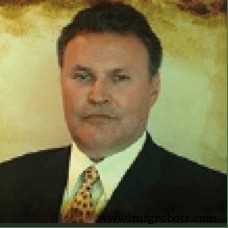 Nick is the CEO and Founder of RiskLogik. Before founding RiskLogik in 2010, CEO Nick Martyn held various command and staff appointments in both the Canadian and British Armies over 27 years of military service in Canada, UK, Germany, Former Republic of Yugoslavia and Afghanistan. From 2008 to 2011, he served as CEO of the Afghanistan Information Management Services (AIMS) where he oversaw the transition of AIMS from the United Nations to independent NGO status and transformed the organization taking them from a negative cash position to a peak of USD $9M revenue in 24 months. During that period AIMS delivered a world class international aid effectiveness management system (ANDMIS) to the Government of the Islamic Republic of Afghanistan while also modernizing the Land Management System and Mapping the Electrical Service in Kabul.
Nick is the CEO and Founder of RiskLogik. Before founding RiskLogik in 2010, CEO Nick Martyn held various command and staff appointments in both the Canadian and British Armies over 27 years of military service in Canada, UK, Germany, Former Republic of Yugoslavia and Afghanistan. From 2008 to 2011, he served as CEO of the Afghanistan Information Management Services (AIMS) where he oversaw the transition of AIMS from the United Nations to independent NGO status and transformed the organization taking them from a negative cash position to a peak of USD $9M revenue in 24 months. During that period AIMS delivered a world class international aid effectiveness management system (ANDMIS) to the Government of the Islamic Republic of Afghanistan while also modernizing the Land Management System and Mapping the Electrical Service in Kabul.
If I had one fundamental piece of logistics management advice for a company, it would be to…
Conduct a complete risk and resilience assessment prior to establishing a new supply chain. Unfortunately, resilience does not come in a box, and cannot be purchased just when you need it. While designing and building a resilient supply chain from the very beginning is much more cost-effective than trying to change the supply chain in mid-stream, many organizations must redesign them as they live with the results of one or more disasters or shocks.
A resilient supply chain is one that is flexible in the face of disruptive events. For example, an inbound supply chain that uses Just-In-Time delivery of parts is lean and cost-effective in the short term, but may be easily disrupted by events beyond the control of its managers. Resilience means having the flexibility of being able to choose from multiple suppliers, several backup modes of transport, or keeping 24-48 hours of parts on hand to smooth out the parts flow during disruptive events. This type of built-in resilience can give operational managers the time to react should the event prove to be a longer-term disruption.
Although logistics systems are called supply chains, they are not linear chains as the name suggests. Rather, supply chains are very often complex webs or networks of infrastructure, suppliers, supplies and services. Managers can’t use linear thinking when determining the weaknesses and risks in a complex system. Therefore, using systems thinking to map and quantify the movement of goods and services, and the dependencies between the parts of the supply chain, is a much more effective way to identify risks in a modern logistics network. This map or model can then be used to demonstrate to company decision-makers where vulnerabilities exist, and by extension which parts of the network are at greatest risk.
Large firms with their own planning departments run scenarios to determine the most costly and the most vulnerable nodes in the network, and use the results of the scenarios to mitigate the risks ahead of time. Until now, smaller firms did not have that ability. However, new software tools are enabling small and medium-sized companies to run their own planning scenarios, and recover more quickly from known events.
Identifying vulnerabilities and mitigating the supply chain risks ahead of time is critical to your survival when the disruptive event hits. This extra time can mean the difference between collapse and the ability to save money, recover faster and with less impact on the business and, most importantly, its customers.
A resilient supply chain is the product of thorough analysis and careful planning. Tomorrow`s resilience is the product of the smart decisions made today. Risk discovery, risk analysis and risk mitigation are complex and potentially costly. Our company, RiskLogik, provides the skilled professionals, proven techniques and leading edge tools to help your company build resilience quickly and cost effectively. RiskLogik’s software is being used by the Government of Ontario to analyze and plan for critical infrastructure risk events, and also by the Government of New Brunswick to map supply chain risks and vulnerabilities within the province. RiskLogik software and methodology has also been used to support program management in Afghanistan, security risks for NATO and the Canadian Forces, and critical infrastructure risk for the Government of Canada.
 Patrick Burnson
Patrick Burnson
@SCMR
Patrick Burnson is the executive editor of Logistics Management, which provides editorial coverage for executives, managers, and other professionals in the field of logistics and supply chain management. Patrick also is the executive editor of Supply Chain Management Review. A widely published writer and editor, Patrick has spent the bulk of his career covering international trade, global logistics, and supply chain management.
NOTE:The following information is excerpted from Strategic Transportation Sourcing:5 Tips to Improve Your Position via Logistics Management.
“Today, freight transportation management is more than just about price. But how do shippers put together a transportation and supplier sourcing strategy that will…”
Earn them the capacity that they need at a price that works for all parties involved?
Tip:Consider Big Data
When asked to identify the trend with the greatest potential impact on the way procurement does it job over the next decade, the majority of the Hackett Group study participants chose predictive analytics or forecasting.
Analysts observe that as procurement’s role matures in transportation management from transactional facilitator to trusted business advisor, proficiency with the next generation of analytics—Big Data—will be a key enabler. Big Data may also add significant value when it comes to customer analytics, bringing more agility to model massive volumes of structured and unstructured data from multiple sources.
However, Donna Wilcek, vice president of product marketing for Coupa, a cloud-based spend management software company, notes that this information overload can be overwhelming. “Everyone from the CFO on down the command in the supply chain should have access to this transparency, so that risk is mitigated and costs are contained,” she says.
In fact, Coupa’s recent whitepaper, “Understanding the Sourcing Organization Maturity Model,” posits that “immature” models may not have much of a process for project planning at all—since sourcing projects are handled on an ad hoc basis.
“As sourcing organizations move up the maturity ladder, projects are managed centrally but still may not be planned upfront,” says Andy Chiang, director of product management at Coupa. Further up the ladder, he adds, transportation sourcing projects are often strategically planned out and results are reported to the CEO.
 Rayford Collins
Rayford Collins
@UPS
Rayford Collins, former supply chain optimization expert with UPS Customer Solutions and current UPS director of global solutions, provides management leadership to a team that delivers engineering, technology, and sustainability solutions to a customer base of established global organizations. Rayford takes a consultative approach with some of the largest high tech and telecom companies around the world and helps them meet objectives in improved customer service, efficiency gains, increased market penetration, and revenue growth. Rayford also focuses on managing customer solutions inclusive of supply chain deign, business process re-engineering, and technology solutions.
NOTE:The following information is excerpted from 10 Small (But Significant) Ways to Improve Your Supply Chain Right Now via UPS Compass.
“There’s no doubt that supply chain and logistics issues are critical to any company’s success. But dramatic improvements don’t always involve…”
Large-scale strategic overhauls or process changes that require months to implement.
Small parcel carriers can often provide a cost savings on multi-piece shipments that don’t involve a full pallet or multiple pallets. Look at small parcel vs. LTL carrier or LTL vs. truckloads to understand the price differentials for various weight and zone break points. Changing the routing or mode of shipments can pay off, especially for midmarket shippers.
Make sure your A and B movers are properly located to allow for minimum processing time and distance to the outbound shipping lanes. Place those fast movers carefully. If they are all in the same aisle or location, you can create a bottleneck as employees run into each other doing the pick.
Companies shipping from more than one location would want A &B movers in each, but D movers in just one, to keep inventory carrying costs down. If you decide you need to have 100 D movers, put them where the warehouse space and labor costs are lowest. That can reduce your inbound shipping cost, too.
 Lora Cecere
Lora Cecere
@lcecere
@SCInsightsLLC
Lora Cecere is the founder of Supply Chain Insights and author of Supply Chain Shaman. She travels the world to track the course of supply chain practices and disruptive technologies. Lora’s writing and work focus on the use of enterprise applications to drive supply chain excellence. As the Supply Chain Shaman, Lora interprets and connects the evolving supply chain world to those in the industry who follow her work.
NOTE:The following information is excerpted from Executing Customer-Centric Supply Chain Strategies via Supply Chain Brief.
“I am on a mission. My goal? I want to understand why some companies outperform on the Supply Chain Metrics That Matter while others do not…”
About twice a month companies ask me to review their strategy documents. Frequently I see the goal of “build a customer-centric strategy” or “define an end-to-end vision to deliver on the customer promise.” However, when I probe and ask companies to explain what this means, I get either a pregnant pause or a blank stare. Many will say “Isn’t it obvious?” I shake my head and answer, “No. It requires a careful execution of strategy and the connection of strategy to execution.” All too often supply chain leaders are good at high-level vision, but weak at connecting the vision to execution. It requires big wings and big feet. (Big wings represent the ideation and creation of the strategy, and the big feet represents the execution. The Customer-Centric Supply Chain Strategy needs both.)
… the companies that are the most customer-centric have ten characteristics:
- Clarity of purpose for the buyer
- Take ownership of the channel:drive reliability and excitement
- Build segmented customer strategies:tie strategy to policy/execution
- Cost-to-serve with data-driven discussions
- The supply chain has a clear focus on outcomes
- Alignment between operations and commercial teams
- Build outside-in processes
- Hands-free and reliable order processes
- Cross-functional listening
- Execute at the moments of truth
 Eric Meister
Eric Meister
@myblujay
Eric Mesister, former COO of LeanLogistics (now Blu Jay Solutions) and Local Orbit, is a pragmatic and results-oriented supply chain and technology executive with proven success in increasing enterprise value through implementing operational excellence, creative and innovative solution development, and creating long-term sustainable, collaborative relationships with team members, customers, and partners. Eric also focuses on the customer while serving as a commercial leader with consistent top and bottom line growth in expanding and contracting markets all the while improving customer and employee satisfaction.
NOTE:The following information is excerpted from Defining and Implementing an Effective Transportation Strategy via Talking Logistics.
“What we find is that the better aligned your strategies are – from supply chain to transportation to carrier strategies – and the better aligned they are with execution, the better able and more effective you are at…”
Managing both cost and service at the same time. Being able to benchmark allows you to identify your supply chain performance and the positioning of your supply chain within the business – both critical factors in determining what kind of shipper you are.
[The key to enabling alignment and synchronization across a broader supply chain strategy is] the people, process, and technology that allow you to hook everything together and make sure there’s alignment over time. Processes and technologies that are designed to provide transparency, visibility, and data are critical to ensuring an alignment between the various levels of strategy. We talk about a waterfall from the carrier to the supply chain strategy to the transportation strategy to the carrier strategy and then to the execution. There’s also a feedback loop forward that allows you to understand whether your strategies are aligned, and what impact changes have on your overall performance. An example would be, what is your carrier performance telling you about your supply chain strategy? If you have a significant change in your on-time or cost performance, what is that telling you about your supply chain strategy? Having that feedback loop ensures alignment.
Asset Tracking Solutions from Camcode:
- Asset Tags
- Property ID Tags
- Foil Labels
- Warehouse Labels
- Warehouse Signs
- Tamper Evident Labels
- Barcodelabels
- Rack Labels
- Hanging Signs
- What is Inventory Control?
Industriële technologie
- Tips voor uw productielijn voor het maken van kasten
- Klanten vinden voor uw productiebedrijf
- Tips voor het verbeteren van het rendement van stookolie voor uw bedrijf
- Tips om meer klanten naar uw bedrijf te trekken
- Vijf strategieën om uw omgekeerde logistieke proces te verbeteren
- 4 tips voor het optimaliseren van uw waterstraal
- Industrie 4.0-technologieën:tips voor het ontwikkelen van uw digitale strategie
- Hoe u uw onderneming kunt voorbereiden op AI-adoptie:belangrijke stappen uitgelegd
- Vergelijk de prijzen van CMMS-software en kies de beste voor uw bedrijf
- Hoe werken chatbots? | Waarom is het belangrijk voor uw bedrijf | 2018
- Tips om uw tuinbouwbedrijf te laten groeien



